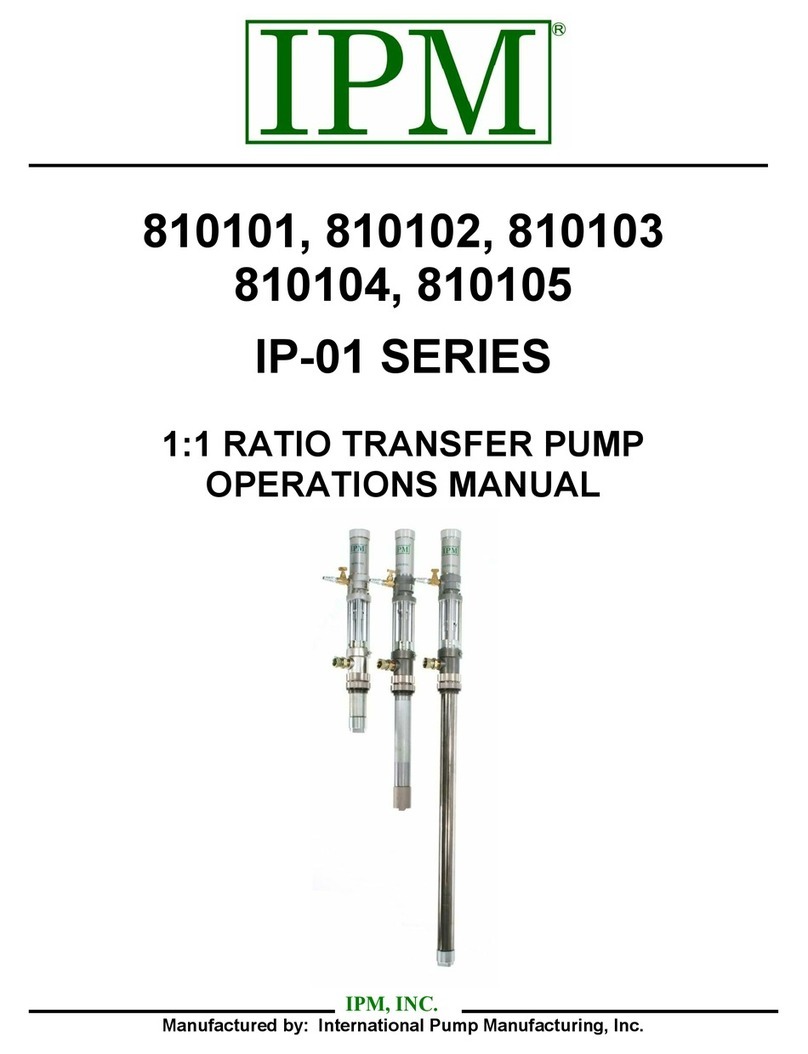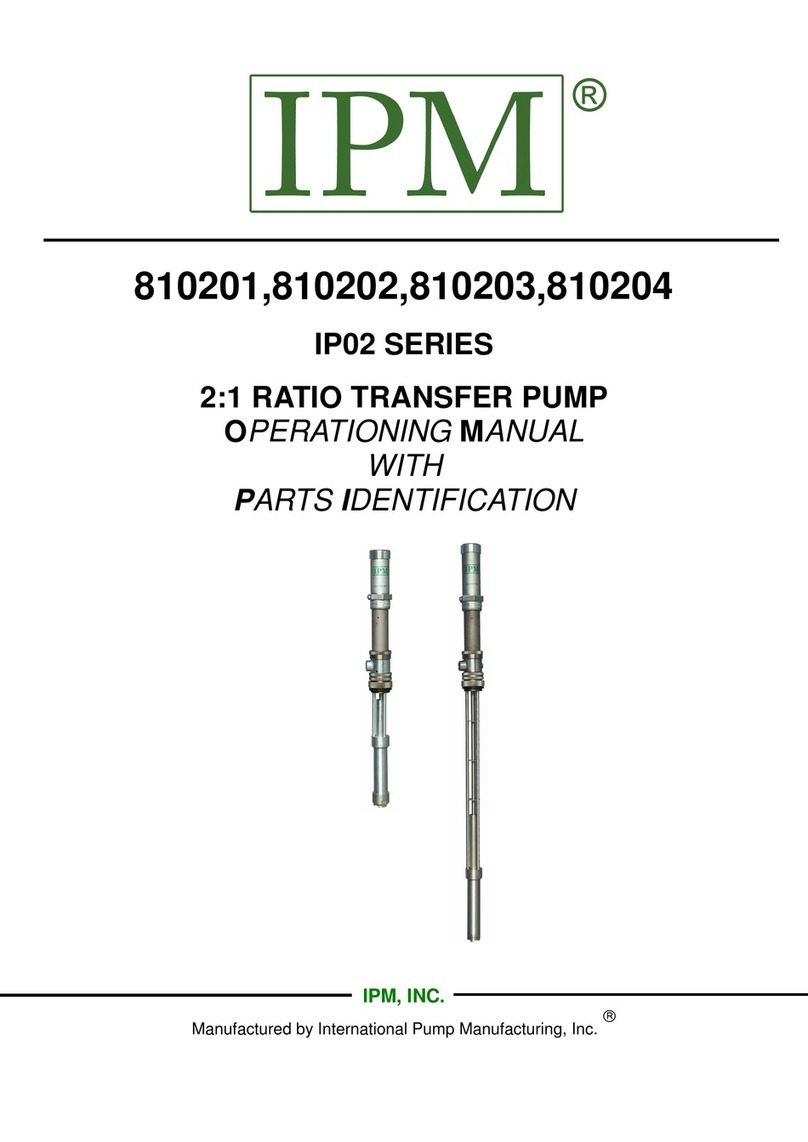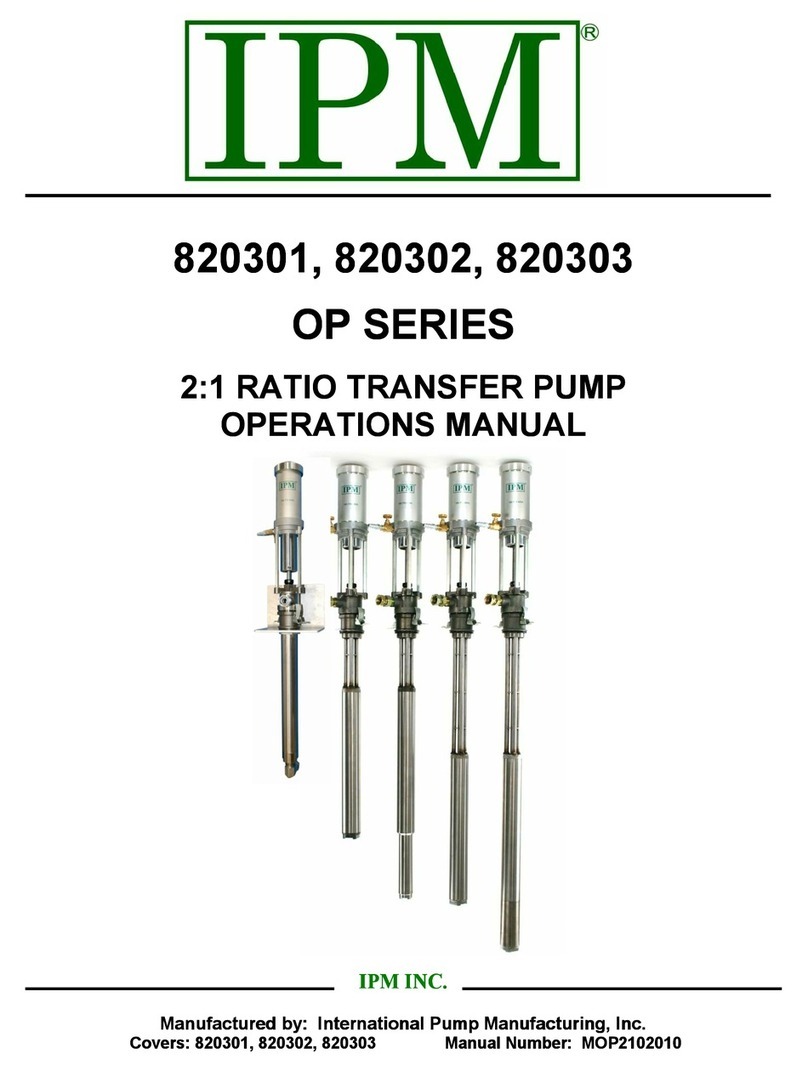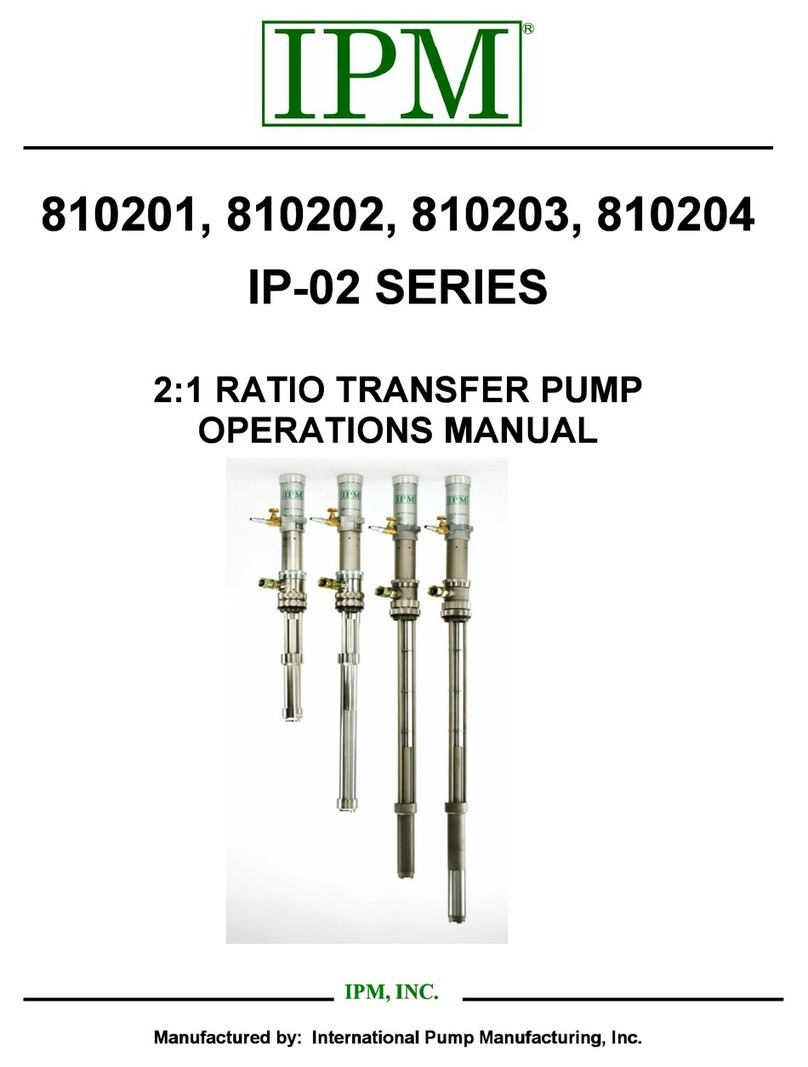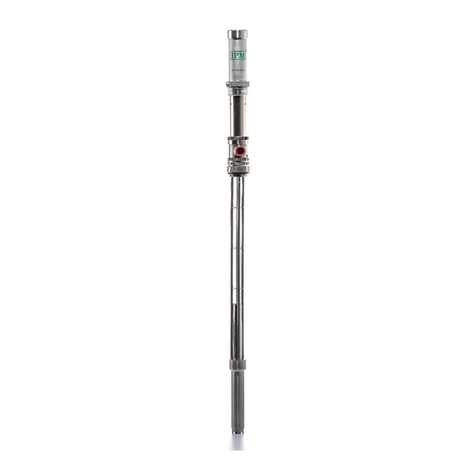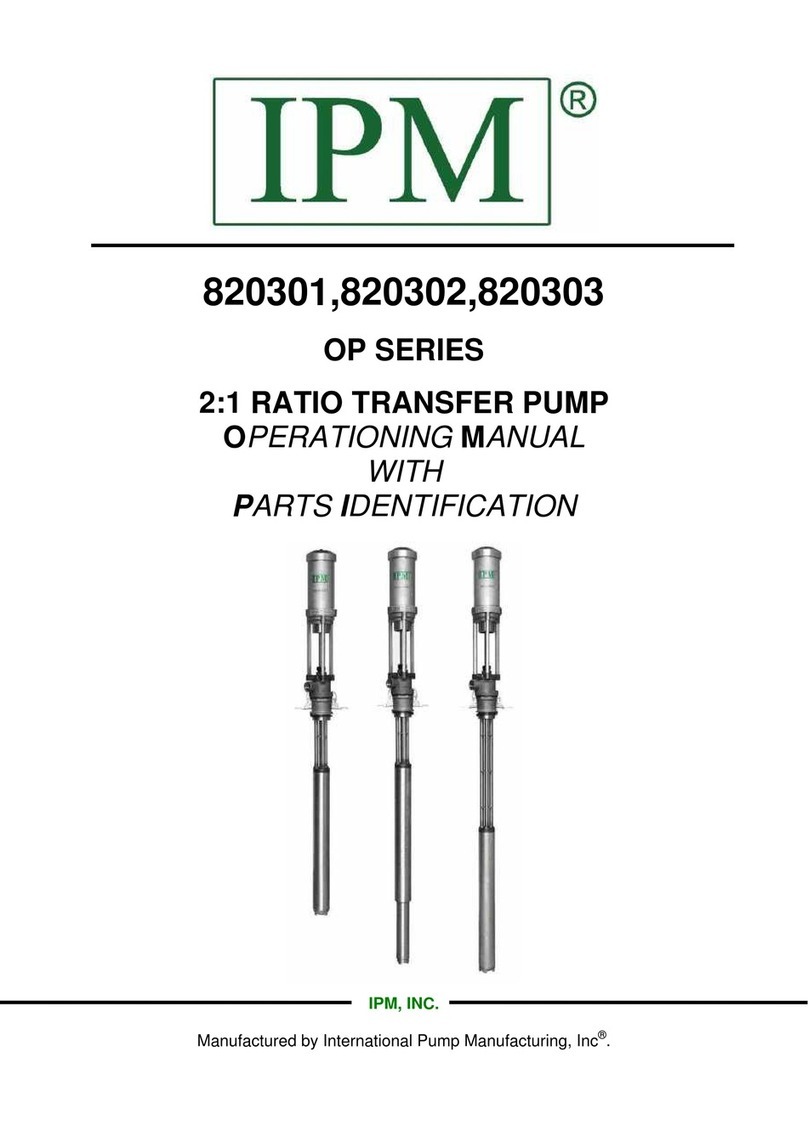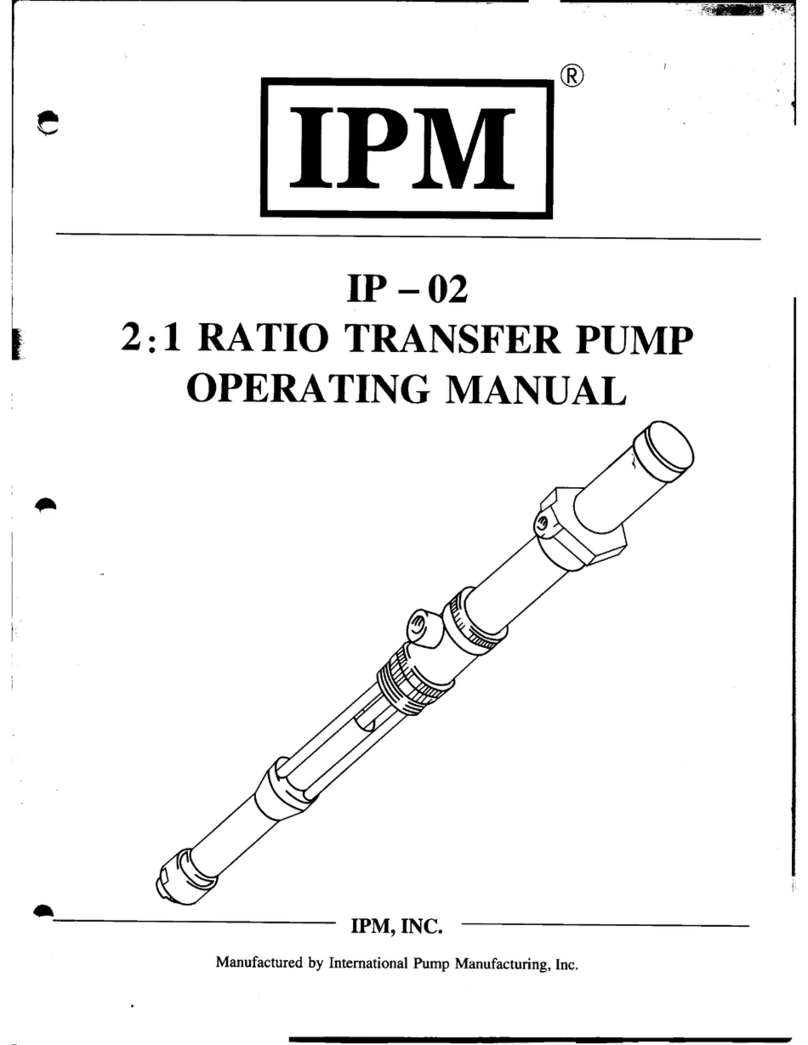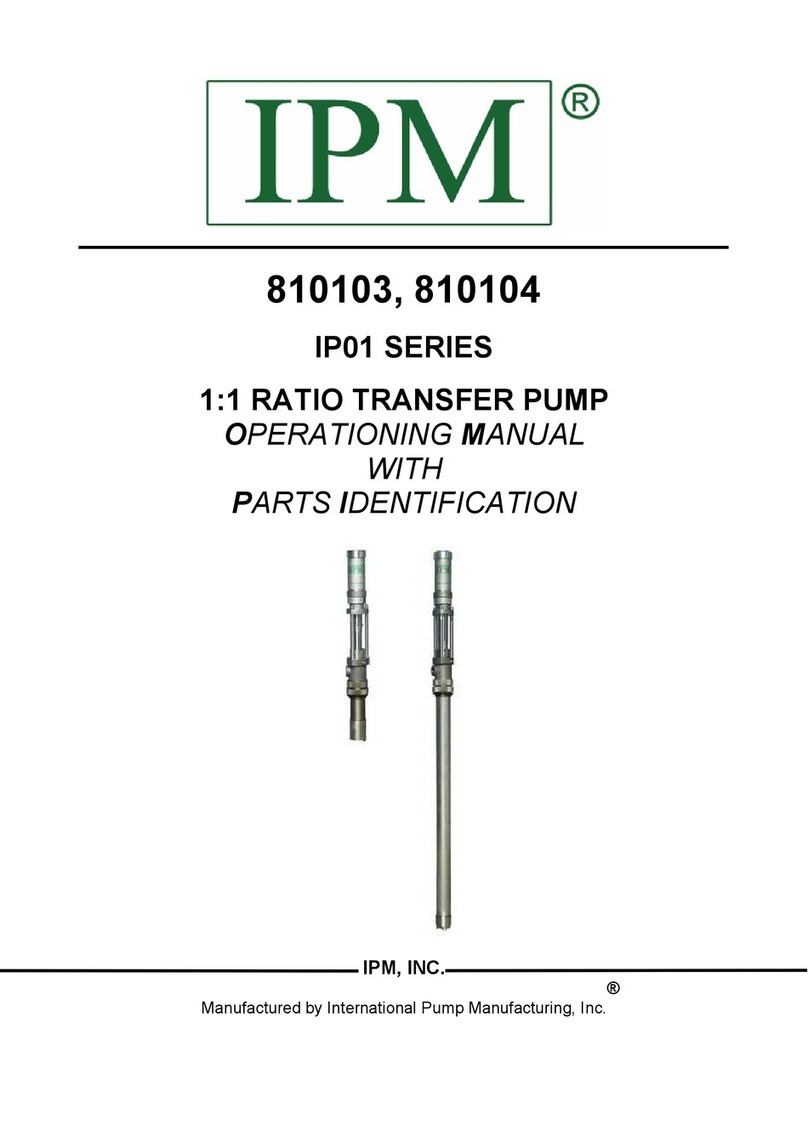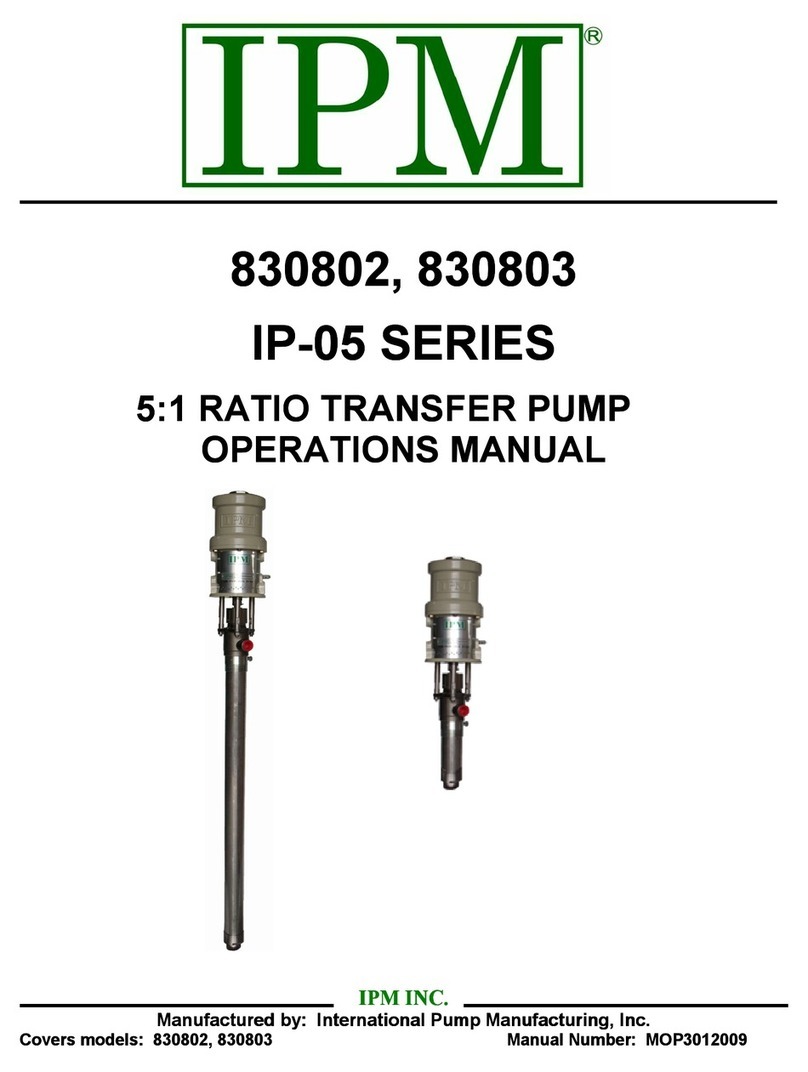
4
1.0 SAFETY WARNINGS
Please read and observe all warnings contained in this operations manual before any attempt
to operate the equipment.
Misuse of Equipment
Misuse of the Equipment can cause serious injury. Use the equipment only for its intended
purpose. Care should be taken to prevent over pressurization of the pump or accessories
connected to it. Use only proper parts in good condition. Use the pump only with compatible
fluids. Improper use or misuse of this equipment could result in fluid being splashed on the skin
or in the eyes, serious bodily injury, property damage, fire or explosion.
Make daily check on the equipment and repair damaged or worn parts immediately.
Do not alter this equipment, doing so could cause it to function incorrectly and could cause
serious injury.
Material & Fluid compatibility
Always ensure the chemical compatibility of the fluids and solvents with the wetted parts in the
pump and any components. Check the fluid manufacturer’s data sheets and specifications
before using the fluids or solvents in this pump.
Pressurized Hoses
Because the hoses are pressurized, they present a danger should the fluid escape at high
pressure. This escaping fluid pressure can spray out and cause serious bodily injury or
property damage. Ensure that the hoses do not leak or rupture due to wear, misuse or
damage.
The hoses should be handled properly - do not pull on the hoses to move the equipment
around. Use the hoses only for fluids in which they are compatible both for the inner liner of the
hose and the outer covering. Use care not to exceed the temperature rating of the hose.
Before each use, ensure that the fluid couplings are tight and that the entire length of hose is
not worn or damaged. Check the entire hose for leaks, bulging cover, damage, abrasion or
cuts. These conditions may cause the hose to fail that could result in splashing of pressurized
fluid on the skin, or in the eyes and cause serious bodily injury or property damage.
Pressure Specification
The maximum working fluid pressure of this equipment is 180 psi (12.5bar) at the maximum
incoming air pressure of 180 psi (12.5bar). Ensure all equipment and accessories used with
this pump are rated to withstand the maximum working pressure of this pump. Never exceed
the maximum working pressure of the pump or any device attached to the pump.
Procedure for Pressure Relief
In order to avoid the risk of serious bodily injury such as splashing fluid on the skin or in the
eyes, or risk of injury from moving parts, the following procedure should be used. This
procedure should be used when shutting down the pump, when servicing or repairing the
pump or any part of the system, when replacing or cleaning components, or when pumping of
fluid is stopped.
1. Close the air valve to the pump.


















